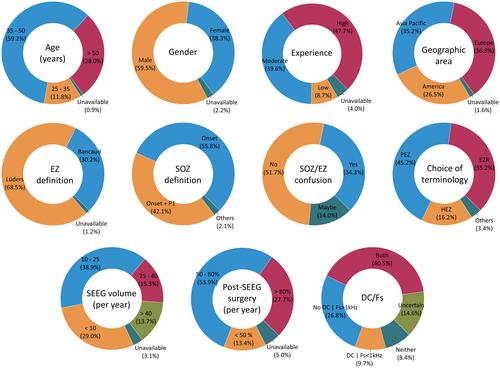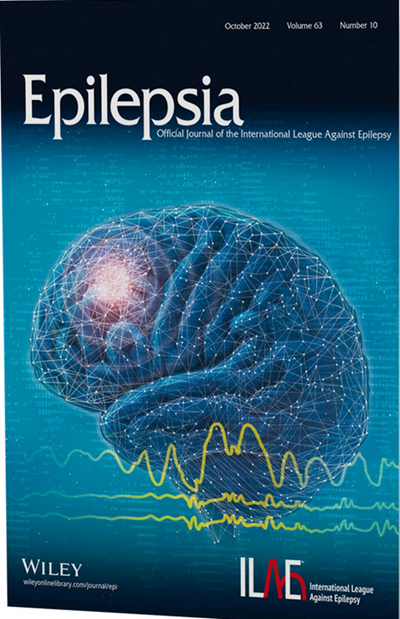Investigating current clinical opinions in stereoelectroencephalography-informed epilepsy surgery
Abstract
Objective
Stereoelectroencephalography (SEEG) is increasingly utilized worldwide in epilepsy surgery planning. International guidelines for SEEG terminology and interpretation are yet to be proposed. There are worldwide differences in SEEG definitions, application of features in epilepsy surgery planning, and interpretation of surgical outcomes. This hinders the clinical interpretation of SEEG findings and collaborative research. We aimed to assess the global perspectives on SEEG terminology, differences in the application of presurgical features, and variability in the interpretation of surgery outcome scores, and analyze how clinical expert demographics influenced these opinions.
Methods
We assessed the practices and opinions of epileptologists with specialized training in SEEG using a survey. Data were qualitatively analyzed, and subgroups were examined based on geographical regions and years of experience. Primary outcomes included opinions on SEEG terminology, features used for epilepsy surgery, and interpretation of outcome scores. Additionally, we conducted a multilevel regression and poststratification analysis to characterize the nonresponders.
Results
A total of 321 expert responses from 39 countries were analyzed. We observed substantial differences in terminology, practices, and use of presurgical features across geographical regions and SEEG expertise levels. The majority of experts (220, 68.5%) favored the Lüders epileptogenic zone definition. Experts were divided regarding the seizure onset zone definition, with 179 (55.8%) favoring onset alone and 135 (42.1%) supporting onset and early propagation. In terms of presurgical SEEG features, a clear preference was found for ictal features over interictal features. Seizure onset patterns were identified as the most important features by 265 experts (82.5%). We found similar trends after correcting for nonresponders using regression analysis.
Significance
This study underscores the need for standardized terminology, interpretation, and outcome assessment in SEEG-informed epilepsy surgery. By highlighting the diverse perspectives and practices in SEEG, this research lays a solid foundation for developing globally accepted terminology and guidelines, advancing the field toward improved communication and standardization in epilepsy surgery.


 求助内容:
求助内容: 应助结果提醒方式:
应助结果提醒方式:


